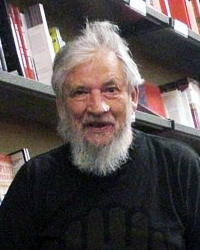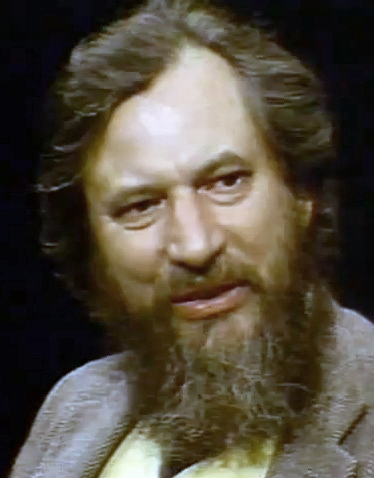
Photo by Greg Manning, June 2011

Photographer Unknown
Erowid Character Vaults
Claudio Naranjo
Nov 24, 1932 - Jul 12, 2019
Summary
Claudio Naranjo was a Chilean psychiatrist and author who wrote nearly two dozen books, many of which were published in numerous languages. In his youth he was trained in classical music. He obtained his medical degree in Santiago de Chile, going on to study medicine, psychology, and spirituality at Harvard, U.C. Berkeley, and the Esalen Institute. At Esalen he apprenticed under the father of Gestalt therapy, Fritz Perls. Protoanalysis, Naranjo's method of describing personality types, eventually developed into the well-known Enneagram system.
In 1962, after becoming inspired by a Harvard economic botany exhibit that displayed various psychoactive plants, Naranjo was assisted by the museum's curator, Richard Evans Schultes, with his desire to research yagé use in the territory of Putumayo in Colombia. Once he was in the Amazon, hoping that it would help open doors for him with the native medicine men, Naranjo revealed that he also studied medicine. He handed out LSD-impregnated pieces of paper, explaining that he was looking for plants that produced similar effects. Within the psychedelic community, Naranjo had befriended Michael Harner, Carlos Castaneda, Leo Zeff, Stan Grof, Willis Harman, and others. After returning to Chile for a few years, he began therapeutic work with harmaline (and various related harmala alkaloids), ibogaine, MDA, and MMDA. Some of this work was reported in 1967 at the San Francisco Ethnopharmacologic Search for Psychoactive Drugs conference and the U.C. Berkeley LSD conference, and some of it was later touched on in Naranjo's 1973 book The Healing Journey: New Approaches to Consciousness.
Over the course of his life, Naranjo has studied numerous esoteric traditions and religions including meditation, Sufism, tantra, Taoism, and Tibetan Buddhism. In 2006 he founded the Naranjo Institute, which sponsors workshops and retreats worldwide that focus on exploring psychological, spiritual, and expressive approaches toward healing and human growth.
In 1962, after becoming inspired by a Harvard economic botany exhibit that displayed various psychoactive plants, Naranjo was assisted by the museum's curator, Richard Evans Schultes, with his desire to research yagé use in the territory of Putumayo in Colombia. Once he was in the Amazon, hoping that it would help open doors for him with the native medicine men, Naranjo revealed that he also studied medicine. He handed out LSD-impregnated pieces of paper, explaining that he was looking for plants that produced similar effects. Within the psychedelic community, Naranjo had befriended Michael Harner, Carlos Castaneda, Leo Zeff, Stan Grof, Willis Harman, and others. After returning to Chile for a few years, he began therapeutic work with harmaline (and various related harmala alkaloids), ibogaine, MDA, and MMDA. Some of this work was reported in 1967 at the San Francisco Ethnopharmacologic Search for Psychoactive Drugs conference and the U.C. Berkeley LSD conference, and some of it was later touched on in Naranjo's 1973 book The Healing Journey: New Approaches to Consciousness.
Over the course of his life, Naranjo has studied numerous esoteric traditions and religions including meditation, Sufism, tantra, Taoism, and Tibetan Buddhism. In 2006 he founded the Naranjo Institute, which sponsors workshops and retreats worldwide that focus on exploring psychological, spiritual, and expressive approaches toward healing and human growth.
Obituaries and Posthumous Biographies #
Author of Books #
Author of (Book Chapters) #
Videos

